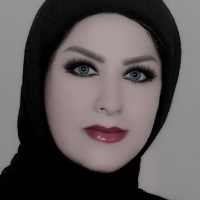The Technology of Metal Objects in the North and Northwest of Iran during the Iron Age based on Metallographic Experiments
In exploring the archaeology of the Iron Age in North and Northwest of Iran, the study of metallic materials is particular importance due to their technical values. Because the Base of the Iron Age chronology is northwest region in Iranian plateau, especially the Hasanlu Site. in fact, during this period the metallurgical Techniques extends to another region of Iranian plateau. In this research, we studied the methods of making metal objects of Iron Age in north and northwest of Iran. the metallurgy of these two regions was compared in terms of Technical and making methods. Also, the methods of making in the Iron Age sites of Northwest of Iran were compared with the North sites of Iran, especially Mazandaran. Therefore the Metalography test was done on Metal objects of Iron Age sites, such as Gohar Tepe site near the Behshahr City and Lafurak cemetery of Savadkuh City in Mazandaran in the North of Iran and the Iron Age sites such as Hasanlu, Kurdlar Tepe, Haftovan Tepe, Ziwyeh and Masjed–e Kabud cemetery in the Northwest of Iran, a metal sample was selected from each site for Metallugraphic test. In this research, using scanning electron microscope to studies the methods of Metal objects. The results of this test show that the most methods of making War tools discovered from the Iron Age of Northwest of Iran, such as Hasanlu have been casting and the most ornamental objects that discovered from the Iron Age in this area are made by hot hammering. The most of the Metal objects from North of Iran are made by hot hammering. Also the Metal objects discovered from the Iron Age sites in Nortwest of Iran compared to the Mazandaran represent a more complex in decoration and construction method. Based on results of metallographic tests and images prepared by scanning electron microscope, it was found that on hammered products, mechanical work such as forging was done after casting. For this reason, their microstructure is differend under a microscope. On the microscopic images of Bronze bracelet from Hasanlu, Bronze arrowhead of Kurdlar tepe, Bronze necklace of Masjed-e kabud, Bronze daggar of Gohar tepe and Iron daggar of Lafurak cemetery, coacial beads are shown very closely together with small dimension. In fact small size of the beads indicate more mechanical-thermal work. Ancient metalworkers used the metal tensile to make the Bronze alloys more flexibility, this thermal treatment improves flexibility property of the Bronze alloy and upgrading the recrystallization process of beads. On images of sample which have been discovered from the Northwest region, the number of beads with brighter color is more than beads with darker color, because, they have more tin.
- حق عضویت دریافتی صرف حمایت از نشریات عضو و نگهداری، تکمیل و توسعه مگیران میشود.
- پرداخت حق اشتراک و دانلود مقالات اجازه بازنشر آن در سایر رسانههای چاپی و دیجیتال را به کاربر نمیدهد.



